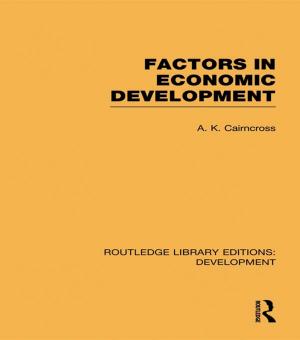The Ashgate Research Companion to Secession
Nonfiction, Social & Cultural Studies, Political Science, International, International Relations| Author: | Peter Radan | ISBN: | 9781317041702 |
| Publisher: | Taylor and Francis | Publication: | March 23, 2016 |
| Imprint: | Routledge | Language: | English |
| Author: | Peter Radan |
| ISBN: | 9781317041702 |
| Publisher: | Taylor and Francis |
| Publication: | March 23, 2016 |
| Imprint: | Routledge |
| Language: | English |
Secession is a detachment of a territory from an existing state with the aim of creating a new state on the detached territory. Secession is usually an outcome of the political mobilization of a population on the territory to be detached and, as a political phenomenon, is a subject of study in the social sciences. Its impact on inter-state relations is a subject of study in international relations. But secession is also subject to regulation both in the constitutional law of sovereign states and in international law. Following a spate of secessions in the early 1990s, legal scholars have proposed a variety of ways to regulate the international responses to attempts at secessions. Moreover, since the 1980s normative justification of secession has been subject to an intense debate among political theorists and moral philosophers. This research companion has the following three complementary aims. First, to offer an overview of the current theoretical approaches to secession in the social sciences, international relations, legal theory, political theory and applied ethics. Second, to outline the current practice of international recognition of secession and current domestic and international laws which regulate secession. Third, to offer an account of major secessionist movements - past and present - from a comparative perspective. In their accounts of past secessions and current secessionist movements, the contributors to this volume focus on the following four components: the nature and source of secessionist grievances, the ideologies and techniques of secessionist mobilization, the responses of the host state or majority parties in the host state, and the international response to attempts at secession. This provides a basis for identification of at least some common patterns in the otherwise highly varied processes of secession.
Secession is a detachment of a territory from an existing state with the aim of creating a new state on the detached territory. Secession is usually an outcome of the political mobilization of a population on the territory to be detached and, as a political phenomenon, is a subject of study in the social sciences. Its impact on inter-state relations is a subject of study in international relations. But secession is also subject to regulation both in the constitutional law of sovereign states and in international law. Following a spate of secessions in the early 1990s, legal scholars have proposed a variety of ways to regulate the international responses to attempts at secessions. Moreover, since the 1980s normative justification of secession has been subject to an intense debate among political theorists and moral philosophers. This research companion has the following three complementary aims. First, to offer an overview of the current theoretical approaches to secession in the social sciences, international relations, legal theory, political theory and applied ethics. Second, to outline the current practice of international recognition of secession and current domestic and international laws which regulate secession. Third, to offer an account of major secessionist movements - past and present - from a comparative perspective. In their accounts of past secessions and current secessionist movements, the contributors to this volume focus on the following four components: the nature and source of secessionist grievances, the ideologies and techniques of secessionist mobilization, the responses of the host state or majority parties in the host state, and the international response to attempts at secession. This provides a basis for identification of at least some common patterns in the otherwise highly varied processes of secession.















